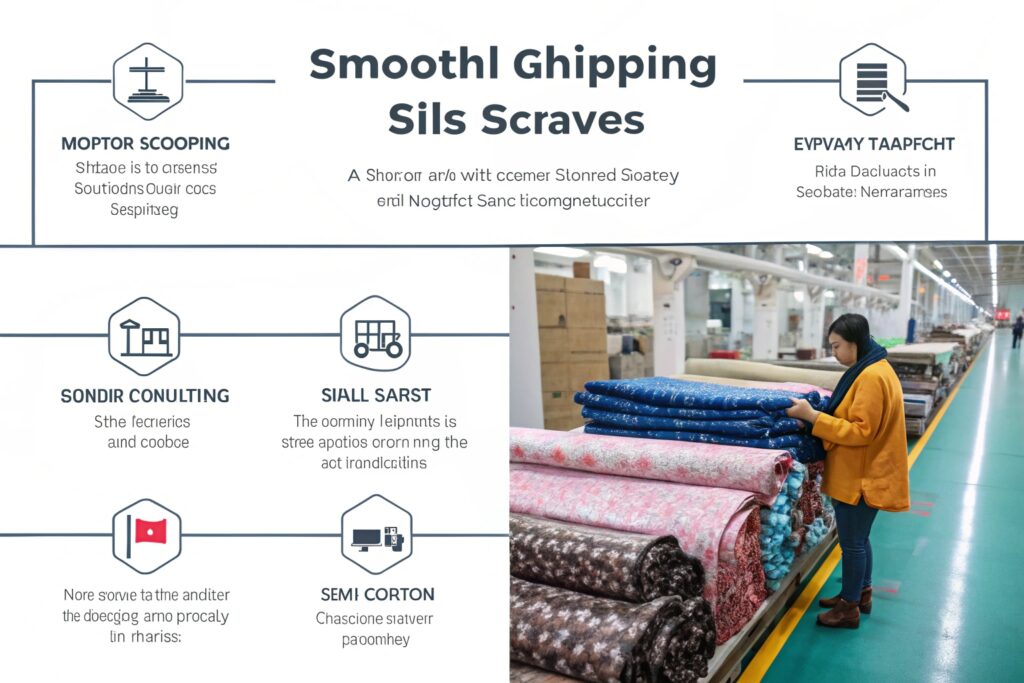Feeling overwhelmed by the import process for silk scarves? Many boutique owners, brand buyers, and startup founders face the same challenge—how to get quality products from China without delays or surprises.
The best way to import silk scarves from China is to partner with an experienced manufacturer who offers clear documentation, customization, and logistics support from factory to your door.
Here’s what you need to know before placing your next wholesale order.
What are the rules for importing from China?
Importing accessories like silk scarves involves more than clicking “order now.” There are government regulations, shipping documents, and sometimes taxes to consider.
To import from China successfully, ensure your supplier provides a commercial invoice, packing list, and certificate of origin, and confirm that your country’s import regulations allow silk textile goods.
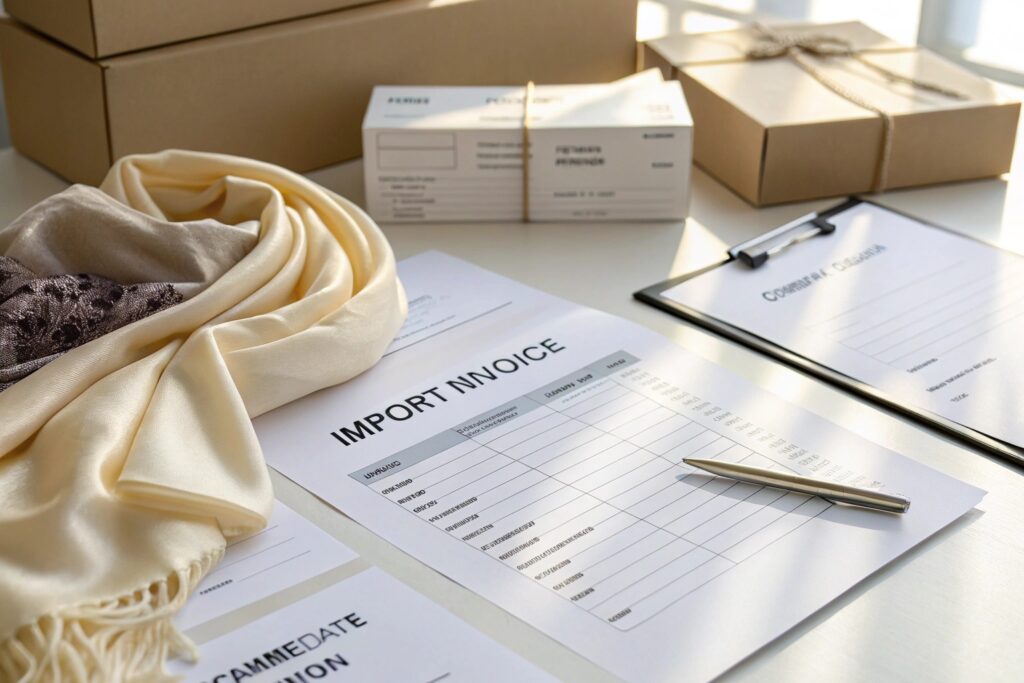
Key Documents for Smooth Import
| Document Type | Why It’s Important |
|---|---|
| Commercial Invoice | Shows item values and buyer/seller details |
| Packing List | Matches goods shipped with customs paperwork |
| Certificate of Origin | Confirms goods are from China (may affect tariffs) |
| Bill of Lading / AWB | Needed for sea or air freight tracking |
HairAcc provides all these documents. We also support DDP shipping (Delivered Duty Paid) to simplify your customs process.
Pro Tips for Compliance
- Use a broker: Especially helpful for first-time importers
- Classify HS codes correctly: For silk scarves, it’s often under 6214 or 5007
- Check US/EU textile regulations: Some require labeling or safety declarations
Mistakes in documentation lead to delays or fines. We guide our clients through every step, no matter their import experience.
Can I import fabric from China?
Absolutely. Many businesses import finished scarves and even raw fabric for local production. The key is to understand how fabric differs from ready-made accessories.
You can import both finished silk scarves and raw silk fabrics from China, but fabric imports may involve separate HS codes, dye regulations, and fiber testing in some markets.
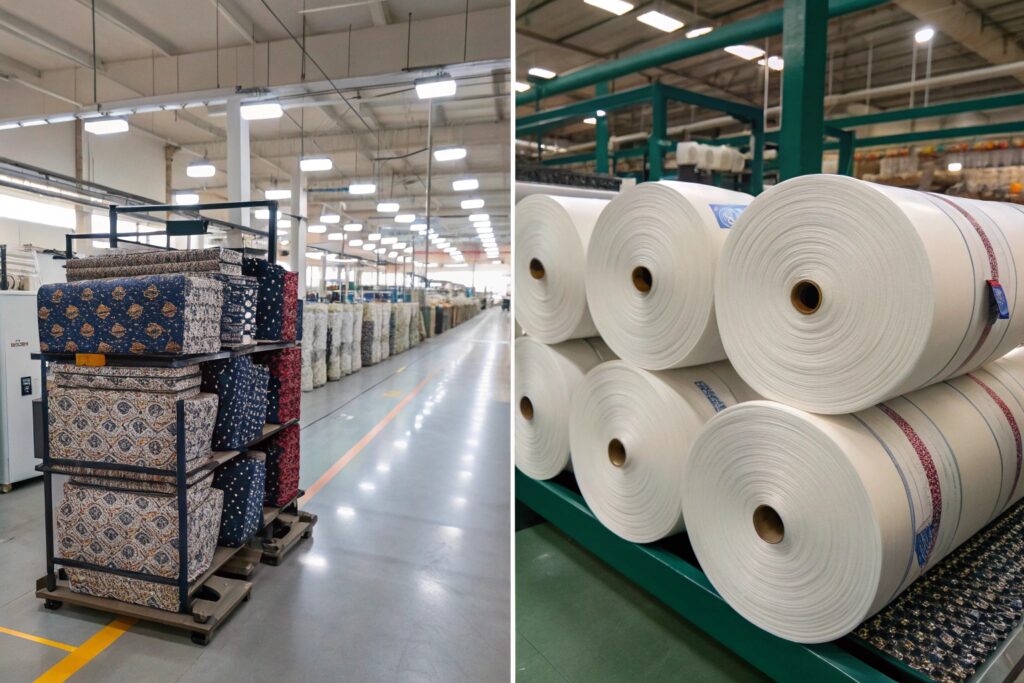
Scarf vs Fabric Import Comparison
| Feature | Silk Scarves | Raw Silk Fabric |
|---|---|---|
| HS Code | 6214, 5007 | 5002–5007 |
| Labeling Needed | Yes | Not always |
| MOQ | 100–300 pcs | 50–200 meters |
| Best Use Case | Ready for resale | Local sewing/design |
HairAcc supports both models. We offer digital printing or custom-dyed silk options for brands that want fabric with their signature style.
Risks to Avoid
- Color fading: If importing dyed fabric, confirm colorfastness
- Shrinkage: Ask for pre-washed silk or test samples
- Import duties: Vary by country and sometimes by fiber source
Ask your supplier for material test reports, especially for children’s wear or eco-friendly brands.
What to do with a silk scarf?
Silk scarves are more than just a neck accessory. They are versatile fashion pieces that serve dozens of styling purposes—great news for your retail or online store.
Silk scarves can be worn as neck ties, hair wraps, bag decorations, wristbands, or even face coverings—making them a high-margin and easy-to-market accessory.
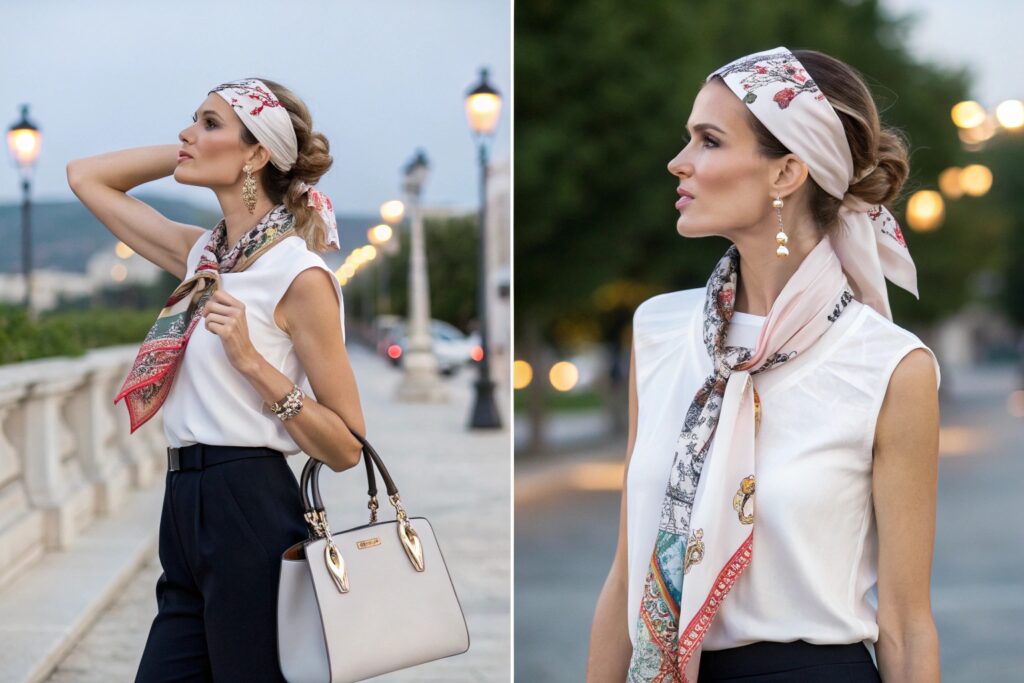
Popular Ways to Style Silk Scarves
| Style Use | Description |
|---|---|
| Hair Wrap | Folded and tied around the head or bun |
| Neck Tie | Classic Parisian knot or loose drape |
| Bag Accessory | Tied to handbag handles |
| Belt or Waist Wrap | Adds a pop of color to simple dresses |
| Wrist Wrap | Used as a soft bracelet or festival look |
At HairAcc, we often offer free tutorials to help your end buyers style scarves creatively. Many e-commerce clients bundle these videos into product pages.
Customization Options
- Printing: Digital, screen, or sublimation
- Hem: Machine-rolled or hand-rolled
- Material: Silk twill, crepe de chine, satin, chiffon
- Packaging: Eco-paper wrap, silk bag, gift box
With custom touches and versatile use, silk scarves become top-selling hero products in many fashion stores.
Are silk scarves on trend?
Yes—especially after recent vintage and minimalist fashion revivals. From luxury brands to Etsy creators, scarves are staging a comeback across age groups.
Silk scarves are trending in 2025 due to their sustainability, elegance, and adaptability—making them a must-stock accessory for boutiques and online stores alike.
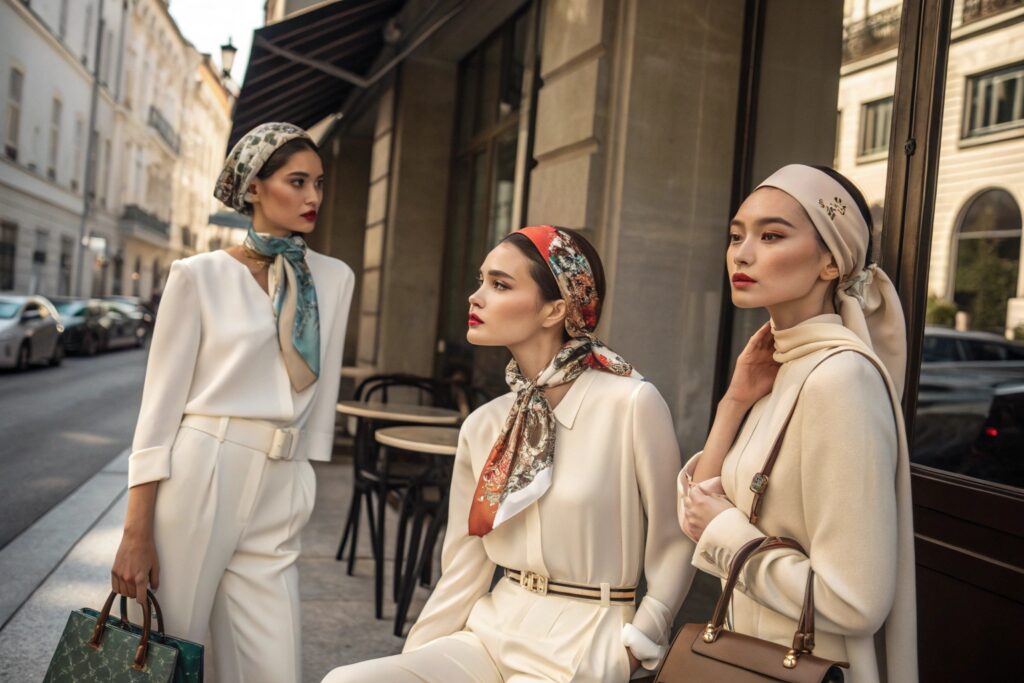
Who Is Wearing Silk Scarves in 2025?
| Audience Group | Reason They Love Scarves |
|---|---|
| Millennials & Gen Z | Retro style, upcycled looks, TikTok influence |
| Corporate Women | Adds elegance to workwear without heaviness |
| Travelers | Compact, multipurpose accessory |
| Eco-conscious Buyers | Prefer natural fibers over synthetics |
We follow trends through fashion expos and social channels. At HairAcc, we update clients every season with color forecasts, bestsellers, and new shapes.
Seasonal Trends We’re Watching
- Monochrome styles: Black, ivory, sand
- Maximalist prints: Baroque, equestrian, floral
- Mini scarves: For hair or wrist focus
- Personalized initials: A growing hit in EU/US markets
By staying trend-savvy and having fast sampling, you stay ahead of your competitors in every launch cycle.
Conclusion
Importing silk scarves from China doesn’t have to be complicated. With the right manufacturer—like HairAcc—you’ll enjoy smooth customs, low MOQ, trend-ready styles, and custom branding. Let us help you turn beautiful scarves into profitable, repeatable sales.

